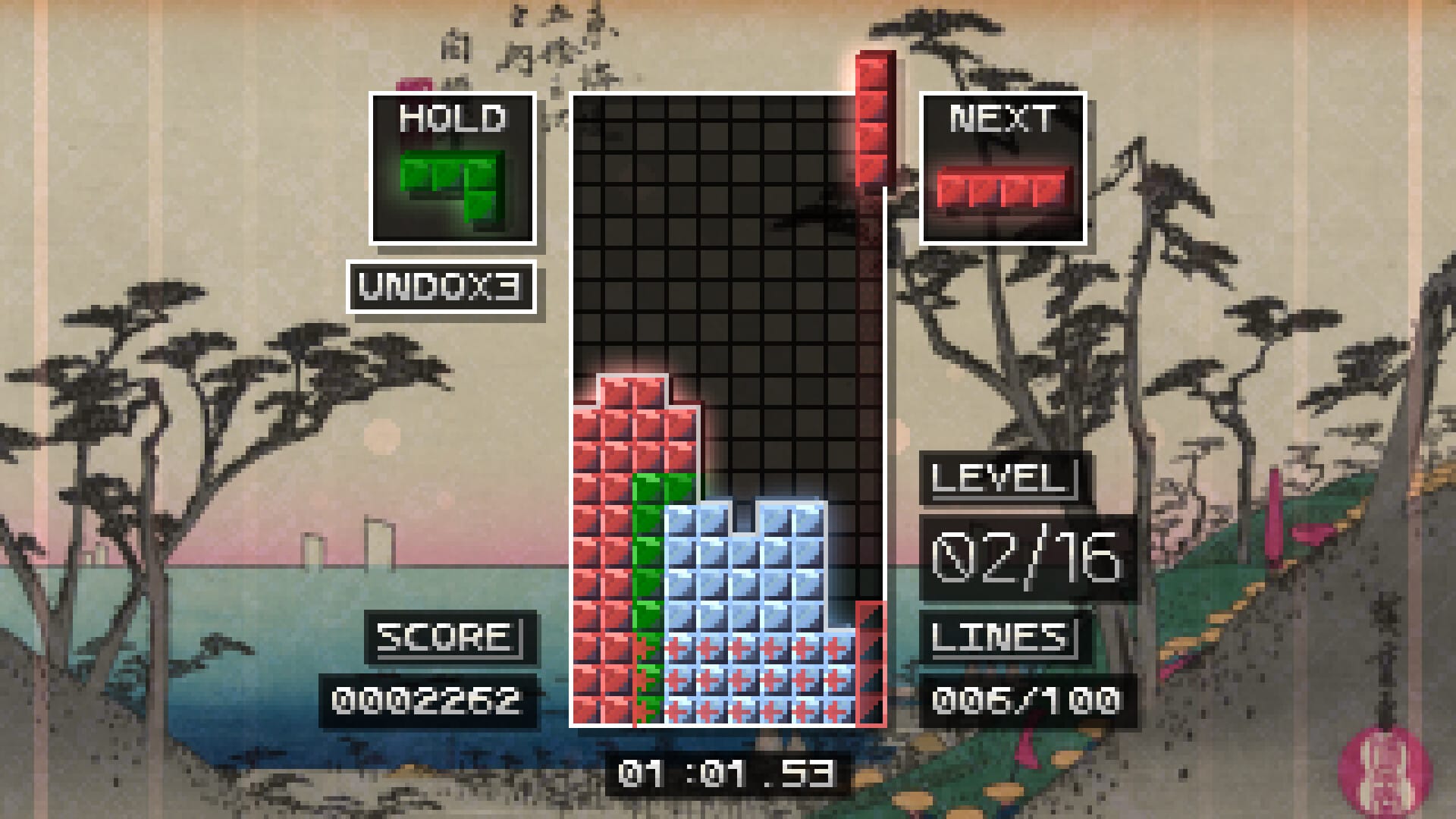It’s been a while since I last played something that got me in the “just one more game” mindset, let alone make me follow through on that impulse. Every time I boot up Tetrachroma, I end up playing at least a couple more rounds than I intended.
Tetrachroma is like Tetris but with one key difference: color matching. Where in Tetris you need only make a line to clear it, Tetrachroma requires that every line be made up of the same color of blocks. The catch being that every time you place a block, unless it’s of a matching hue, it will change the color of all the blocks in its immediate vicinity. It’s effectively Tetris meets Reversi (or Othello as it’s often known as).
Usually the difficulty comes from just increasing the speed blocks fall at. Tetrachroma does this as well, but it’s the core design that makes it hard. Adding color matching to Tetris is a small but significant change, one that’s immediately felt as you start playing. You can’t plan ahead to set up multi-line clears, then (the I pieces aren’t nearly as powerful here), nor can you just play it by ear and clear lines as you’re able – or, rather, you can do either, but nowhere near as easily as you can in Tetris.
For as much as the usual rules of play apply, Tetrachroma forces you to adapt to its particular rules. For a while I either played it too much like I would Tetris proper or throw blocks wherever they fit without regard for how it might screw things up later. The basic Tetris gameplan is so easy to grasp, so deeply ingrained if you’ve played any version of it with any frequency that any major change is difficult to adjust to.

With each new stage, another color is introduced, going from the starting two all the way to four, further complicating the process. On some level having more colors makes things easier since you have more chances to clear lines on the fly. Not being limited to only two colors to work with means more opportunities to alter the blocks around you, more opportunities to set up multi-line clears. But more often than not, it just creates a more chaotic game state with a higher frequency for getting out of hand. A carefully crafted tower just one or two pieces away from a several line clear can easily – almost inevitably – be ruined by the next few blocks being the wrong colors, undoing everything you’ve built.
Rewinds and block holds help keep the chaos in check, but I often cleared stages by the skin of my teeth. No matter how well each game started off, how well I would keep the rising tower of blocks in check, I would inevitably be dangerously close to the top of the well by the time I was within reach of the 100-line goal of each stage. More often than not my runs would end there, usually after surviving far longer than I should have, victory just barely beyond reach. Occasionally I’d luck into clearing eight lines at the last second, the once untenable mess of blocks somehow setting itself up perfectly to meet the goal and grant me a second chance in the next stage.
In both cases, that’s Tetrachroma at its best. The comeback potential is a big part of what makes every game exciting. Even as things look to be falling apart, it’s never truly over until it’s over. And then it’s right back in for another go.
Callum Rakestraw (he/him) is the Reviews Editor at Entertainium. You can find him on Bluesky, Mastodon, and his blog.





